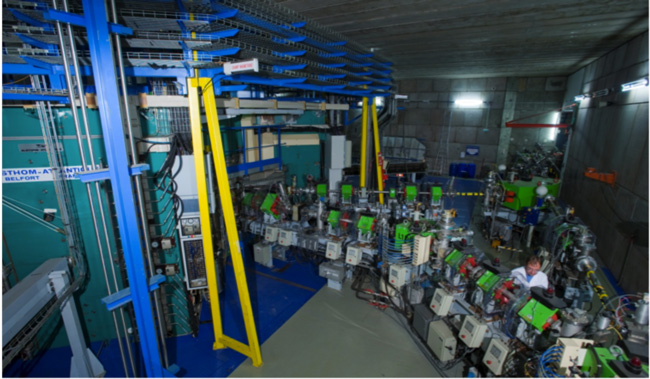A major research tool in Nuclear Physics
After all the many discoveries that have punctuated in the last century the exploration of the infinitely small, discoveries of radioactivity, of the nucleus, of artificial radioactivity, of fission, nuclear physics has become a major discipline of physics. It even gave birth to a new discipline, particle physics. Since 1970, France has an Institute for these two disciplines, the Institute for Nuclear Physics and Particle Physics, the IN2P3.
Modern nuclear physics is no longer limited to the study of the 290 nuclei of the stability valley that make up our environment. Almost 2,800 unstable nuclei, called exotic nuclei, have been synthesized to up to now. Much more remains to be discovered. These nuclei that have vanished were produced at the beginning of our universe and are the source of some of the matter around us. Today powerful accelerators make it possible to recreate these ephemeral objects, and more generally to explore the nuclear matter states. France has a powerful installation of this type, with the GANIL accelerator.
The GANIL accelerator (Large National Heavy Ion Accelerator) is installed in Caen in Normandy. It is managed by the CEA and the CNRS / IN2P3. This accelerator, consisting mainly of two cyclotron-type accelerators, makes it possible to produce beams of atoms which are ionized and then accelerated up to 100 MeV per nucleon (approximately 1/3 the speed of light). Inaugurated in 1983, this laboratory welcomes several hundred French, European and international researchers every year to carry out experiments. For almost two decades, GANIL has been accelerating beams of radioactive nuclei with the SPIRAL installation. GANIL is at the service of fundamental and applied research. The high-quality beams produced at GANIL have been combined with advanced detectors.

GANIL aerial view
Located in Caen, in the french Normandy,GANIL is the largest particle accelerator (ions) in France, and one of the largest in the world.
© Ganil
Ganil accelerates to high energies ions obtained from neutral atoms. These projectile ions then collide violently with the atoms at rest of a target. During the collision, nuclei come into contact. A nuclear reaction occurs which leads to the production of new nuclei, which physicists seek to identify in their detectors.

Huge machines to accelerate tiny particles
The Cyclotron accelerates the ions along a spiral trajectory.
© GANIL
GANIL is one of the four major laboratories in the world for research with ion beams. The areas of experimentation range from radiotherapy to atomic and nuclear physics, from condensed matter to astrophysics. In nuclear physics, GANIL has enabled numerous discoveries on the structure of the nucleus, on its properties and on so-called « exotic » nuclei that do not exist naturally on Earth.
SPIRAL2 : a new GANIL accelerator
Since November 2016, GANIL has had a new accelerator named SPIRAL2 (Système de Production d’Ions Radioactifs Accélérés en Ligne de 2ème génération).
This installation produces ion beams ten to one hundred times more intense than those previously available at GANIL. Using these very high intensity beams, SPIRAL2 will allow new advances in the knowledge of the atomic nucleus, its structure, its thermodynamic properties, and very heavy nuclei. Nuclear physics and astrophysics will benefit. SPIRAL2 will also benefit to applied research, with applications ranging from the production of radioisotopes for nuclear medicine, to the study of the impact of intense neutron fluxes on materials.